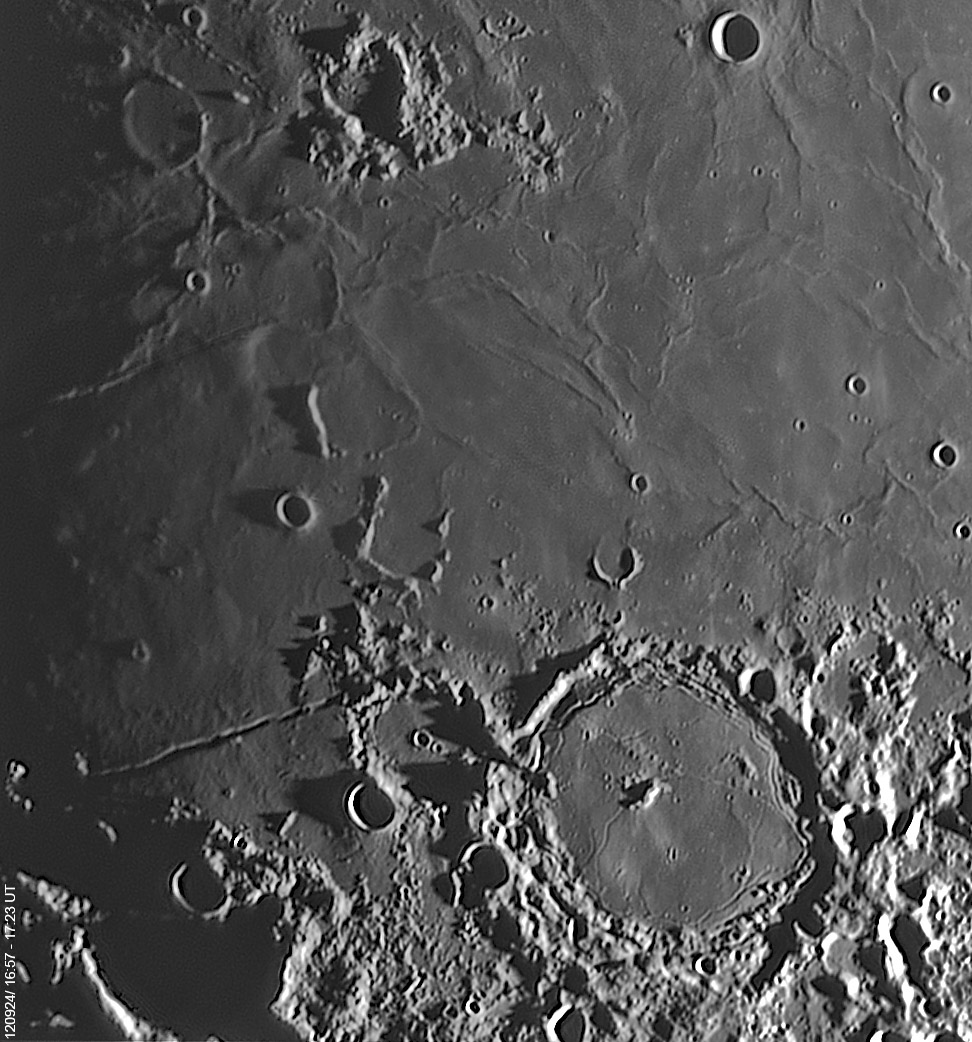Difference between revisions of "October 2, 2012"
| Line 19: | Line 19: | ||
<br /> | <br /> | ||
<hr /> | <hr /> | ||
| + | <!-- Removed reference to store page --> | ||
| + | </div> | ||
| + | ---- | ||
| + | ===COMMENTS?=== | ||
| + | Register, and click on the <b>Discussion</b> tab at the top of the page. | ||
| + | <hr> | ||
| + | You can support LPOD when you buy any book from Amazon thru [[Support_ LPOD|LPOD]]! | ||
| + | <span style="font-size:88%"> | ||
| + | <center> | ||
| + | Contributions to http://www2.lpod.org/ are licensed under a Creative Commons Attribution No-Derivative-Works Non-Commercial 3.0 License. [http://www.creativecommons.org/licenses/by-nc-nd/3.0 http://www.wikispaces.com/i/creativecommons/by-nc-nd_3.0_80x15.png]<br> | ||
| + | </center> | ||
| + | </span> | ||
Revision as of 19:14, 31 January 2015
Linear Mystery

image by George Tarsoudis
George's image is a wonderful low light view of ridges throughout Mare Nubium. As I looked to see if any of the ridges marked buried craters I noticed a possible Lamont-type partial double ridge ring just south of Nicollet near top right. But then I saw the diagonal line crossing the Lamont-type feature. Following the trend to the west-southwest toward the terminator it becomes, with a slight offset, a rille-like feature. The "rille" parallels the Hesiodus Rille near bottom left. A quick check of the LRO QuickMap shows no evidence of the "rille" or the linear features near Nicollet. Of course, the QuickMap mosaic has a much higher illumination angle so low relief features would be harder to see. So is this alignment an artifact, perhaps where individual frames were mosaicked together, or is it a true feature on the lunar surface? The parallelism of the"rille" and the Hesiodus Rille suggests that the linear features are real, but the straightness, especially at top right is suspiciously like an artifact. George can tell us if this is a join line, but other observers with low Sun images of the area may want to check them.
Chuck Wood
Update: George reprocessed this mosaic and the linear features disappeared, consistent with Patricio's Comment. This LPOD was NOT meant to criticize George but to discuss the difficulty of interpreting features at the edge of resolution. This was a significant problem over a hundred years ago when a scientist interpreted photographic grain and defects as features on the Moon. As photography and its limitations became better known that misinterpretation problem mostly disappeared. But anything at the limits of detectability must be looked at carefully, as this LPOD tried to demonstrate.
Technical Details
Telescope Newtonian 10 inch @f/6.3, camera Unibrain fire-i 785, filter Red, barlow 3X, mosaic 4 images.
Related Links
Rükl plate 54
See George's entire mosaic of Nubium here.
COMMENTS?
Register, and click on the Discussion tab at the top of the page.
You can support LPOD when you buy any book from Amazon thru LPOD!
Contributions to http://www2.lpod.org/ are licensed under a Creative Commons Attribution No-Derivative-Works Non-Commercial 3.0 License. 



